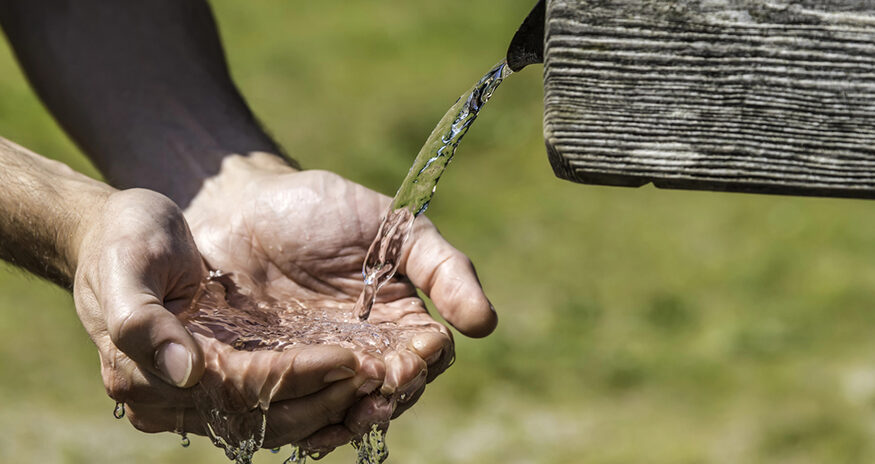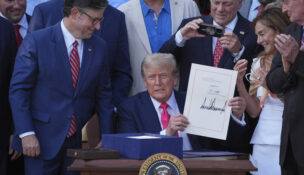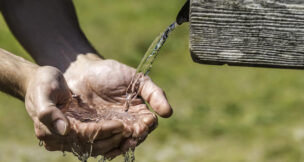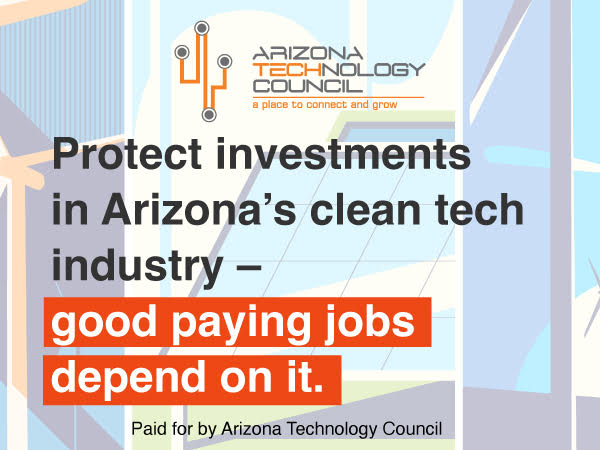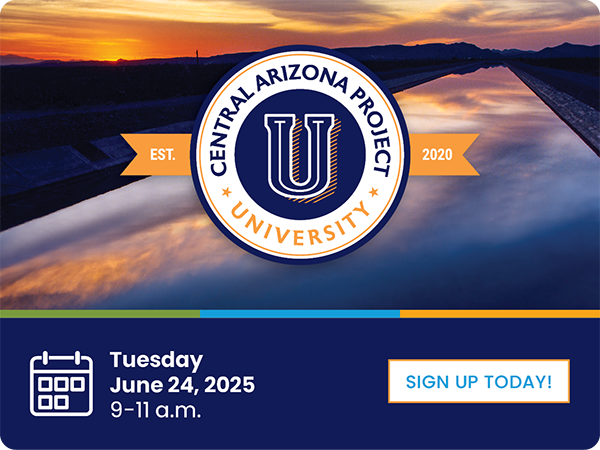Arizona water authority scrambles to protect $400 million water fund before tough budget year
Bob Christie, Capitol Media Services//October 24, 2025//
Arizona water authority scrambles to protect $400 million water fund before tough budget year
Bob Christie, Capitol Media Services//October 24, 2025//
Key Points:
-
Arizona’s Water Infrastructure Finance Authority faces a tough budget year with limited funds
-
Lawmakers have cut or clawed back promised funds, leaving the agency with less than $400 million
-
WIFA’s board is preparing to launch a $96 million loan program for in-state water providers
It’s bad to be sitting on a pot of money if you’re a state agency in a tough budget year.
That’s a lesson that board members of the obscure entity charged with finding new water supplies for drought-plagued Arizona learned over the past two years.
Sitting on a pot of cash makes you a target when state lawmakers, facing a budget shortfall for basic state services, are looking around for places from which to grab it.
Members of the board overseeing the Water Infrastructure Finance Authority have already seen that happen. And that has them trying to figure out right now how to spend what they do have — and quickly.
Instead of sitting on the $1 billion the Legislature and then-Gov. Doug Ducey promised them three years ago to find new water sources; the agency, more commonly called WIFA, has just over a third of that money remaining.
That’s because lawmakers and current Gov. Katie Hobbs cut or completely eliminated the second and third $333 million payments promised to the agency in landmark legislation Ducey signed in 2022 amid budget shortfalls. And they clawed back some of the deposits they had already made to the agency, spending the money elsewhere, leaving the board with less than $400 million.
The coming budget year is likely to be even worse for the state’s finances, as cuts in federal spending and tax reductions in President Donald Trump’s “One Big Beautiful Bill” start to hit the state’s own revenues.
All of that was on the WIFA board members’ minds as they turned their attention toward protecting the money they still have from new cuts that may soon come.
During a presentation by WIFA’s government affairs staff, board member Buchanan Davis asked about the elephant in the room: whether the board should be concerned about further raids on its funds.
“Although I don’t think under any circumstances we should have a big target on our backs … some people do,” Davis noted. “They view us, as we’ve seen, as maybe the piggy bank if they’re looking for a rainy day fund type thing.”
Judah Waxelbaum, who advocates for the agency at the Legislature as WIFA’s head of government affairs, said the point he’s been trying to make to lawmakers is that the money they have is not the state’s budget reserve fund.
“We’re here to make it rain, not be the rainy day fund,” he said. He said his first job is to protect the money WIFA does have from further raids.
And while the state budget situation for the coming budget year may be grim, WIFA needs to show it is spending the money it does have — and in ways that will actually boost Arizona’s water supplies, he said.
“We have been hearing for years now that we will fund you when you have projects,” he said about lawmakers. “We heard you loud and clear.”
WIFA has drawn some criticism because it hasn’t delivered any of the projects Ducey and a bipartisan group of lawmakers envisioned in that 2022 legislation.
Hailed at the time as the most consequential change in water laws since the 1980 Groundwater Act, WIFA was charged with using that $1 billion to find new sources of water, especially as dropping Colorado River flows mean less of that water is being sent into central and southern Arizona.
The 2022 law said WIFA should spend at least 75% of that $1 billion — or whatever money it gets — on finding and then importing new water into Arizona. The other 25% is allocated to developing new water sources from inside the state.
In August, the WIFA board finally received six proposals for importation from private companies. Three of those would include building desalination plants, most likely on the Sea of Cortez in Mexico, then piping that water north to the Phoenix metro area.
Details of those proposals remain under lock and key as staff review them to determine whether they are viable enough to recommend to the WIFA board for starter cash to flesh out the plans further. That’s expected by December, just a few weeks before the Legislature gathers to begin the 2026 session.
Some lawmakers believe the importation component of the augmentation law is simply unaffordable and unattainable. Rep. Alexander Kolidin, R-Scottsdale, is a frequent and vocal critic.
Kolodin said in an Oct. 24 interview that there are few ways to import water, none of which make financial sense: a desalination plant that would cost about $10 billion, or a pipeline from the Mississippi, Missouri, or some other central U.S. river.
Both options would lock state buyers into hugely expensive supplies for decades. A third possibility would be to partner with a California city to help build out a desalination plant in exchange for that city’s Colorado River allocations.
“That might be good policy, depending on the terms of the deal,” he said.
But Kolodin was blunt in his criticism of the importation schemes, saying they are akin to “a billion-dollar PR campaign.”
“It exists so we can tell everybody, ‘Oh, look, we’re doing something about water,’ when we never actually do anything about water and where the importation component of the project is really set up for failure,” he said. “And was set up for failure from Day One.”
“And secondarily, it probably exists because somebody’s got their eye on that pot of money and they want to use it to enrich their friends,” he added. “And the sooner that people stop going off the rails when we sweep funds out of WIFA and realize that it’s not fit for purpose as to the importation side, the sooner we can start actually talking about real solutions instead of relying on this pie in the sky.”
Kolodin is more supportive of the potential for in-state augmentation, and the WIFA board is gearing up to start spending the other 25% earmarked for that purpose.
At their Oct. 15 meeting, the board approved the outlines of a $96 million loan program designed to encourage state water providers to develop innovative ways to boost their current in-state water supplies. The board hopes to provide them with money that they can’t secure for themselves from banks and other investors because the projects may be risky or unusual.
WIFA’s staff is now preparing the applications for that new program, and agency Director Chelsea McGuire told the board they expect plenty of interest.
“We’ve done some work out in the field to say, is there a demand for an in-state program?” McGuire told the board. “And the answer has been a pretty resounding yes.”
Board members also have to decide whether to “leverage” the money they do have in the in-state program — essentially, whether to help water agencies across the state borrow more than the $96 million devoted to that part of the agency’s new mission.
“I think the primary question before us is leverage or not leverage,” Ted Cooke, who leads the board’s long-term water augmentation committee, told members. “And with respect to leverage, it’s just a question of how much do you leverage?”
The two augmentation programs — added to WIFA’s existing mission of helping fund conservation and other programs using loans and grants by the 2022 law — will operate separately, although there may be some overlap in things like moving or treating those new water sources, members said.
Cooke and board member Tim Thomure, who is Tucson’s city manager but has extensive experience in water policy, agreed that treating the in-state and importation funding separately, while reserving the ability to merge them if needed, is important.
“I just see very different risk profiles, very different time frames, very different scales between the two programs that I think merit their own independent evaluation and consideration before we make any fundamental decisions there,” Thomure said.
The board hasn’t committed to that path as it works to complete a financial plan for the augmentation programs. Board vice-chairman Pete Kim said members need to weigh that in more detail before making a final decision on how the two interact.
“If water is the lifeblood of the state then capital is the lifeblood of a lending organization like ours,” Kim said. “It’s right up there with some of the more important conversations we’ve had.”
But getting the money committed quickly is important if they hope to avoid further raids by the Legislature. And the WIFA board appeared committed to doing that as fast as possible.
“As we’ve seen, if it’s just sitting in an account waiting for something to get done, then it’s ripe for the taking,” Sen. T.J. Shope, a Coolidge Republican who is a non-voting member of the WIFA board, said in an interview Thursday.
“Part of the conversation that I recall from the budget that we passed in June was that there was general frustration (among both Republicans and Democrats) that there had been really nothing that had come out of WIFA yet,” Shope said. “And we were hoping that it was going to ignite kind of a fire to begin doing something – kind of poking it with a stick if you will.”

